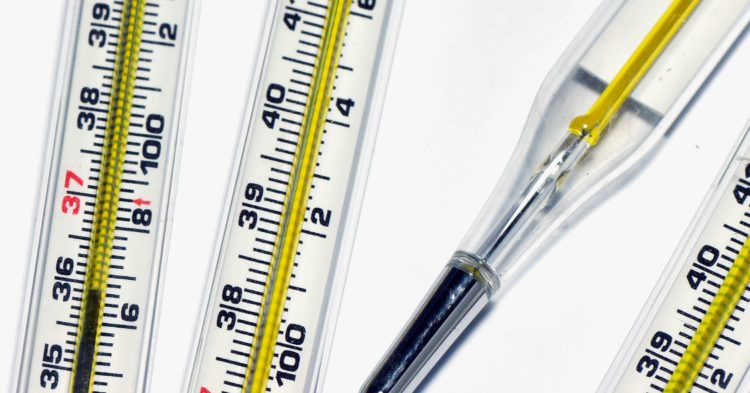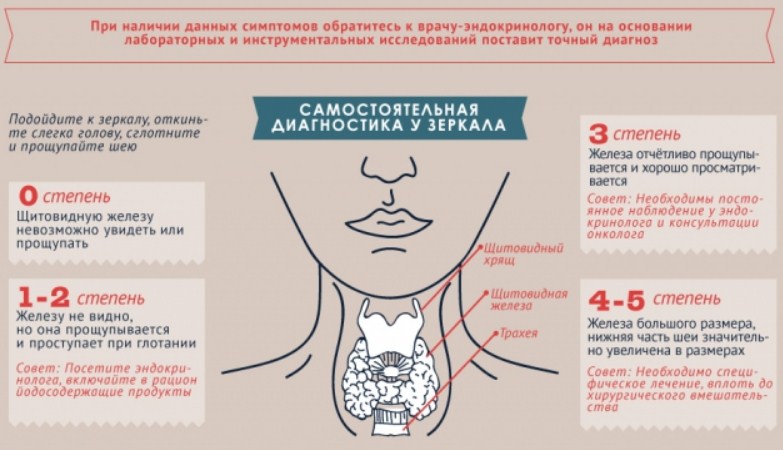Body temperature is an important indicator of human physiology. The optimal norm is 36.6 ° C, if the indicator rises and exceeds 37 ° C, it is time to sound the alarm-this means that there is some kind of failure in the body.
Contents
- The temperature has been held for a long time: the danger of increased body temperature
- High temperature lasts a long time: how to measure the temperature correctly?
- For a long time, the temperature lasts: reasons
- Possible norm
- Pregnancy and lactation
- Thermal neurosis
- Temperature "tails"
- Oncology
- Autoimmune diseases
- Toxoplasmosis and brucellosis
- Tuberculosis
- Veneral diseases
- Sepsis and hidden diseases
- Thyroid diseases
- Addison's disease and anemia
- The use of medicines
- The child has a temperature for a long time
- High temperature lasts a long time: how to diagnose the cause?
- The temperature lasts for a long time: what to do?
- Video: Fighting with temperature with Dr. Komarovsky
Read more about why the temperature of 37.1 ° C to 37.6 ° C will last long will be told in this article.
The temperature has been held for a long time: the danger of increased body temperature
- In the process of long -term studies, it was proved that the human body temperature increases when the immune system reacts to the presence of diseases in the body.
- Pathogenic microorganisms produce special substances that penetrate the blood. This launches a chain reaction, and the human body independently begins to produce the same pyrogenic substances.
- Acceleration of metabolism occurs so that the immune system can cope with the disease.

If a person develops a disease, then increased body temperature will not be the only sign. In the case of colds, other symptoms can be noted:
- fever;
- pain in the field of lymph nodes;
- cough;
- runny nose.
If the cold proceeds in a mild form, then the body temperature does not increase above 37.8 ° C. In difficult situations, an increase to 40 ° C is possible.
- Everyone knows how to treat a cold. First you need to rinse your throat and take antipyretic drugs. In particularly difficult situations, the use of antibiotics will be required. And after a few days the body returns to normal.
- Some people could notice that they are constantly noted subfubbrilite. This is a condition in which the constant temperature is in the range from 37 ° C to 38 ° C. If it lasts less than a week and is accompanied by any infectious disease, then you should not panic.
- You need to worry if the temperature without symptoms is held for a long time, about more than a week. This is a signal that the body fails and it is necessary to eliminate it.
High temperature lasts a long time: how to measure the temperature correctly?
- Quite often the reason for which the body temperature is held for a long time is it is wrong to measure it. Therefore, first you need to check the serviceability of the thermometer.
- Are not always accurate electronic devicesthat are sold at low cost. Literally after a few months they can issue an error in measurements. It is better to measure the temperature with different thermometers to exclude or confirm this reason.
- Body temperature is measured Sitting in a calm state. The procedure is not recommended after active physical activity, because at this time the blood actively rushes to the tissues, which provokes the error.
- In the evening, the body temperature in the evening is slightly higher than in the morning. Therefore, it is better to measure indicators after waking up.

For a long time, the temperature lasts: reasons
- If you do not have symptoms of infectious diseases, and the temperature lasts high for a long time, consult a doctor. After a thorough examination, the specialist will be able to say what the reason is lurking. By self -medication, it is not recommended not to aggravate the situation.




- You also need to know the main reasons why the subfebrile temperature lasts for a long time. There are several explanations for this. It will be about them further.
Possible norm
- According to statistics, about 2% of the population of the planet constantly live with a temperature slightly higher than 37 ° C. If you have a subfebrilite recently, and not from childhood, then you are not included in this category.
- This is an indicator of the presence of problems in the body. And you need to proceed to determine the true cause.
Pregnancy and lactation
- Hormones that are in the body of each person control the indicators of body temperature. During pregnancy, the woman’s body is completely reorganized. Therefore, there is a sharp jump in hormones.
- As a result, the body is overheated. Therefore, for pregnant women, the temperature in the range from 37.1 ° C to 37.6 ° C is the norm.
- On the second trimester The level of hormones, along with temperature, normalizes. And during lactation, subfubbrilite may occasionally appear again, which is also considered the norm.
Thermal neurosis
- In the brain there is a department called hypothalamus. It controls body temperature. Given that the brain is an interconnected system, changes in one half can be reflected on the other.
- If a person experiences stress, depression or neurosis, then body temperature can increase to 37.6 ° C.
If the subfebrile is prolonged, then additional symptoms occur:
- Neurasthenic condition.
- Stress.
- Psychosis.
But, during sleep, everything is normalized. Therefore, if after waking up you measured the temperature and indicators in normal, then the problem lies in the hypothalamus and the nervous system.
- At such moments, it is better to contact a specialist (neuropathologist or psychotherapist). The doctor, if necessary, will prescribe a course of treatment.
- After all, it cannot be launched by subfebrilee, otherwise it can provoke more serious problems.
Temperature "tails"
- Often, subfubbrilite becomes a followed by an infectious disease. Acute respiratory diseases provoke a situation when immunity goes into a state of increased mobilization.
- If you do not fully get rid of ARZ markers, then subfebrilee will last 10-14 days after the peak of the disease. This phenomenon, in the medical sphere, is called a "temperature tail."
- It can manifest itself both in adults and in children. If you are faced with such a situation, then the immune system is weak. And you need to undertake different ways to strengthen it.
Oncology
- According to statistics, if a subfebrile temperature is held for a long time - this is one of the first symptoms of the development of cancer. This can be explained by the fact that with the development of a tumor, pyrogenic substances that provoke an increase in body temperature fall into the human blood. Most often, subfebrilee is symptom of the development of leukemia.
- It is impossible to independently exclude this reason. We'll have to consult a doctor and undergo a thorough examination of the whole organism. Only after the tests will it be clear whether to worry.
Autoimmune diseases
If a person has an immune system impaired, then autoimmune diseases may appear. These include:
- rheumatoid arthritis;
- crohn's disease;
- lupus erythematosus.
Immune cells (lymphocytes and phagocytes) are blocked by exposure to foreign bodies. But, there are times when they begin to attack the cells of their own body. This is the cause of autoimmune diseases.
- They can be accompanied by other symptoms. The nuance is that the signs do not appear immediately. But body temperature from 37.1 ° C to 37.6 ° C literally from the first days can give a danger signal.
- Therefore, it is better to immediately undergo an examination by a doctor in order to prevent the development of a dangerous illness or completely exclude autoimmune diseases from the list of causes of subfebrilet.
Toxoplasmosis and brucellosis
Owners of pets are often diagnosed with toxoplasmosis. It is accompanied by such symptoms:
- Headache
- Weakness throughout the body
- Lack of appetite
- Subfebrilite

Toxoplasmosis, a person can become infected through meat. Therefore, you need to carefully subject it to heat treatment.
- If you notice the above symptoms, consult a doctor. The disease can be diagnosed only after the tests. An important indicator of the disease is that increased body temperature does not disappear from antipyretic drugs.
- Brucellosis - Another disease that is transmitted to a person in contact with pets. Symptoms are approximately the same as in the case of toxoplasmosis. It is better to immediately consult a doctor and not start the disease.
Tuberculosis
A very common disease in the modern world is tuberculosis. Even the methods of modern medicine are not able to completely cure the disease if there is an advanced stage.
In addition to subfebrilet to the signs of tuberculosis, they include:
- Increased sweating.
- Fast fatigue.
- Slide problems.
- Loss in weight.
To determine the presence of the disease, it is necessary to make a test mantu and fluorography. The last method helps to detect the pulmonary form of tuberculosis. But, he can hit bones, epidermis, genitourinary system and eyes. Therefore, it is better to undergo a comprehensive examination.
Veneral diseases
- If in the 20th century the diagnosis of AIDS sounded like a sentence, then modern drugs and equipment help to maintain the life of a sick person for several decades. Infection occurs not only with drug use or random sexual intercourse. You can become a carrier of the disease even after improper blood transfusion.
- The first symptom of AIDS is subfubbrilite. You can also observe a change in stool, weakness, increased exposure to infectious diseases and rashes on the skin. If you notice any of the symptoms, see a doctor right away. In the early stages, it is easier to fight the virus.
Sepsis and hidden diseases
- Some infections, being in the human body, are in no way manifested. The only symptom may be increased body temperature. Infectious process It is able to disperse in any body system. Most often, urination organs are affected.
- Often infections are located in the oral cavity. Even caries, in the case of a neglected form, can become a source of bacteria entering the blood. The human immune system begins to work actively, increasing body temperature.
Thyroid diseases
The thyroid gland is involved in the formation of metabolism. Some thyroid diseases are able to provoke an increase in hormone emission.
As a result, such symptoms are observed:
- Increased sweating and the inability to endure the heat.
- Deterioration of the appearance of hair, skin and nails.
- Reducing body weight.
- Increased blood pressure.
- Frequent heartbeat.
- Subfebrilite.

If you suspect that there is an imbalance of thyroid hormones, consult a doctor. Only after the tests can you understand whether there is a problem or not.
Addison's disease and anemia
- Cases of Addison's disease are very rare. It is expressed in the fact that the adrenal glands do not develop enough hormones. Symptoms of the disease are not immediately manifested. Only a few weeks later can you notice a slight increase in body temperature.
- Anemia is a common disease expressed in a lack of red blood cells. In this case, a person will definitely encounter the problem of subfebrilet.
The use of medicines
Subfebrile temperature may appear when using medicines.
There are several categories of drugs that provoke such a state:
- penicillin antibiotics;
- antipsychotics;
- sedatives (antidepressants);
- narcotic analgesics;
- antihistamines.
Increased body temperature can be an allergy signal to some drug. To determine this, it is necessary to stop taking the medicine on which suspicions fall. You can’t do this yourself. It is better to consult your doctor first.
The child has a temperature for a long time
- Small children who have not turned 1 year old often suffer from elevated body temperature. This is due to the fact that their body is developing.
- If you are worried about subfebrilet in a small child, consult a doctor. He will be able to say exactly what is happening to the baby.

High temperature lasts a long time: how to diagnose the cause?
Based on the above reasons, it is quite difficult to determine why the temperature from 37.1 ° C to 37.6 ° C has long lasted for a long time. This can be a signal of the presence of diseases and infections in the body or it is a common condition. If you feel that you are ill, use antipyretic drugs.
These include:
- Ibuprofen.
- Paracetamol.
- Aspirin.
To determine the true cause of elevated body temperature, take tests. The most basic - blood analysis. It shows how quickly the red blood cells settled in the blood. If the speed increases, then the body has infection or inflammation. To identify AIDS or hepatitis, a separate general blood test is given.

Also recommended undergo a complete examination, including ultrasound, radiography and tomography. This will help to identify diseases even in a hidden form. To identify the pulmonary form of tuberculosis, fluorography is required.
The temperature lasts for a long time: what to do?
- If you notice that a temperature of 37.1 ° C is held for a long time up to 37.6, contact the therapist. After the examination, he will be able to give a referral to another doctor (infectious disease specialist, endocrinologist, cardiologist, otolaryngologist or surgeon).
- If subfubbrilite is observed, then there is no need to perform systematic treatment. It is required to determine the real cause of this condition.
- If you constantly use antipyretic, then you can start a true ailment. Then the treatment of a dangerous disease can become long and complex.

When a person encounters a subfebrile temperature, he panic and begins to self -medicate. But this is a huge mistake. It is better to consult a doctor. On the inspection, tell him whether they contacted the animals, whether exotic countries were visited, etc. Only after a complete picture of your lifestyle, it will be possible to determine the cause of a constant elevated temperature.
Useful articles about health:
- Violation of metabolism in women: causes
- How to independently make diagnostics of the body as a state of nails
- How does conception differ in conception from fertilization?
- How is fertilization
- The child sweats hands and feet, and smell: reasons







